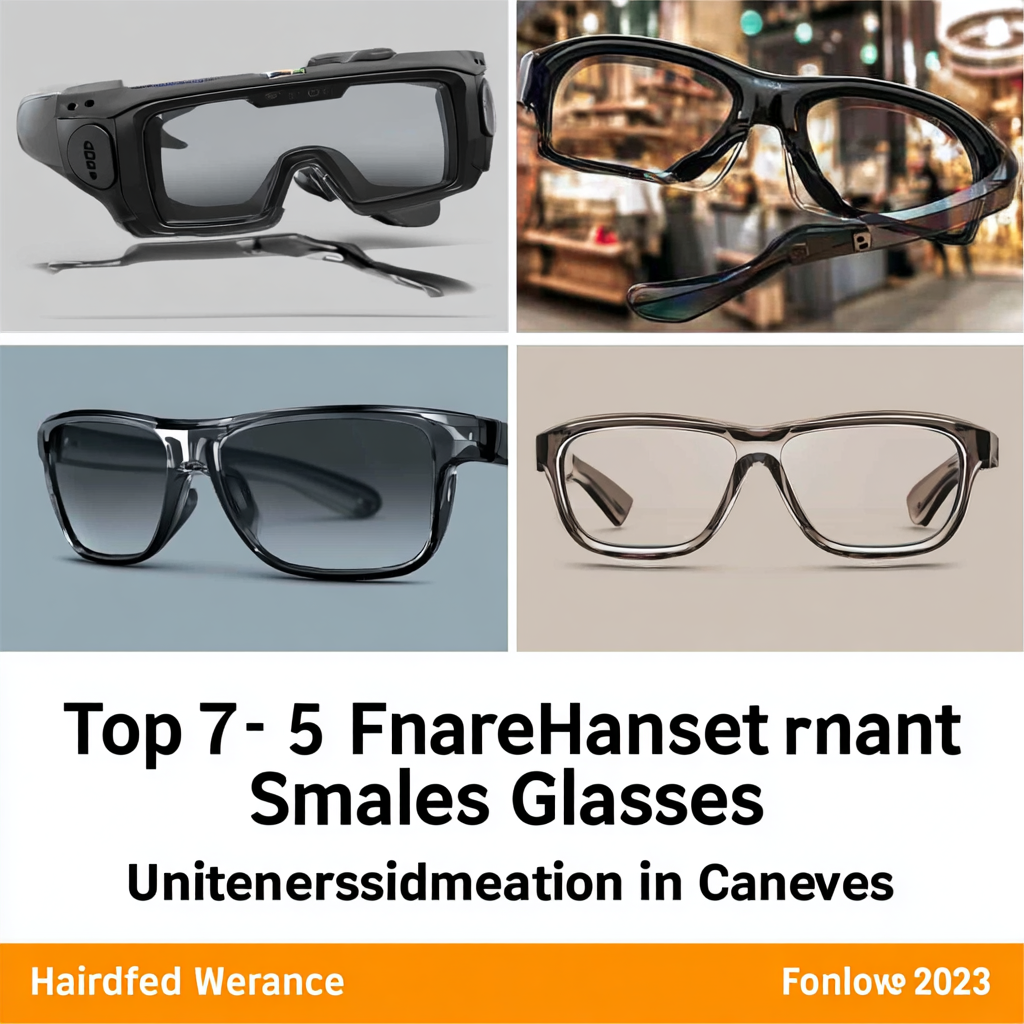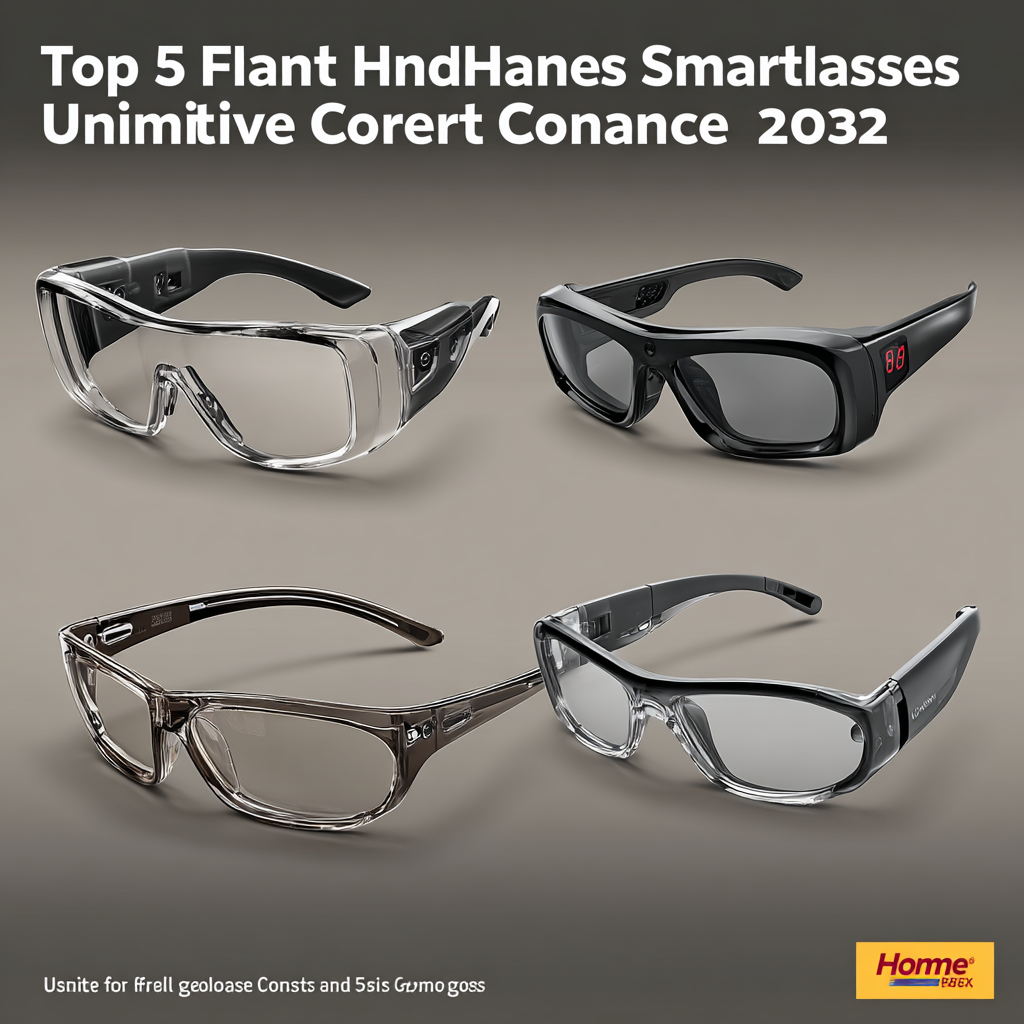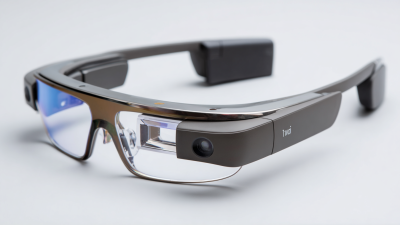 +86-13613020876
+86-13613020876



In the evolving landscape of technology, "Hands-Free Smart Glasses" represent a significant leap towards enhancing convenience and functionality in our daily lives. According to industry expert Dr. Amelia Sparks, a leading researcher in wearable technology,
"The adaptation of hands-free smart glasses is reshaping the way we interact with the world around us, providing seamless integration of information and communication."This statement captures the essence of how these devices are not just gadgets but transformative tools that empower users to multitask efficiently.

As we look towards 2023, the market for hands-free smart glasses is burgeoning, driven by advancements in augmented reality and artificial intelligence. These innovative eyewear solutions are designed to keep users connected without the constraints of traditional devices, allowing for a more fluid and immersive experience. From navigation assistance to real-time notifications, the capabilities of these glasses are expanding, making them indispensable for tech-savvy consumers.
In this article, we will explore the "Top 5 Hands-Free Smart Glasses for Ultimate Convenience in 2023," examining their features, practicality, and how they fit into the lifestyle of the modern user. Stay tuned as we delve into the future of wearable tech and discover the most cutting-edge options available this year.
When it comes to choosing hands-free smart glasses in 2023, there are several innovative features that elevate their functionality and user experience.
According to a recent report from Market Research Future, the global smart glasses market is expected to reach $4.3 billion by 2025, with a CAGR of 15.6%.
This growth highlights the increasing demand for smart eyewear that can seamlessly integrate with daily tasks while providing convenience.

In 2023, the demand for stylish and functional smart glasses has surged, driven by advancements in augmented reality (AR) and health monitoring technologies. A recent report by Market Research Future indicates that the global smart glasses market is expected to reach approximately $6 billion by 2025, growing at a compound annual growth rate (CAGR) of 20%. This growth reflects a rising consumer interest in hands-free devices that seamlessly integrate with daily life, combining fashion with cutting-edge technology.
Leading the charge are sleek designs that cater to various lifestyle needs, from fitness enthusiasts to tech-savvy professionals. For instance, the latest models boast features like real-time notifications, voice commands, and health tracking capabilities, enabling users to stay connected and monitor their wellness without disrupting their activities. IDC's research highlights that 75% of consumers prioritize aesthetic appeal alongside functionality when choosing wearable technology, reinforcing the importance of style in the development of modern smart glasses. As brands continue to innovate, we can expect to see even more sophisticated designs that not only enhance user experience but also make bold fashion statements.
As smart glasses continue to evolve, the comparative analysis of battery life and performance becomes increasingly crucial for consumers seeking ultimate convenience in their daily routines. In 2023, several models stand out for their impressive battery longevity, allowing users to engage with features like seamless video recording and interactive fitness guidance without the anxiety of constant recharging. When evaluating different brands, it's important to consider how long each model lasts in various usage contexts—ranging from basic usage to more intensive applications such as virtual meetings or augmented reality experiences.

Performance metrics, such as processing speed and integration with voice assistants, also play a significant role in determining the best choice for consumers. The latest offerings in smart glasses boast powerful AI capabilities that enhance user interfaces and overall usability. By comparing these critical aspects, you can identify which smart glasses provide the most efficient balance between battery life and performance, ultimately enabling a more seamless and innovative experience in everyday tasks.
In recent years, hands-free smart glasses have begun to significantly influence how users engage with technology in their daily lives. A report by Grand View Research indicates that the global smart glasses market is expected to grow at a compound annual growth rate (CAGR) of 23.3% from 2022 to 2030. This surge highlights a burgeoning interest among consumers in augmented reality (AR) experiences. Users have found that smart glasses provide practical features, such as navigation and notifications, seamlessly integrating into their routines without the need to pull out a smartphone.
User experiences reveal that these devices enhance productivity in various settings. For instance, a survey conducted by Statista shows that approximately 55% of users reported increased efficiency when using smart glasses for work tasks, such as hands-free access to information and real-time communication. Additionally, 60% of respondents noted that the ability to capture images or videos directly from their eyewear enhanced their personal and professional interactions, illustrating a shift toward a more connected and streamlined way of living.
With advancements in technology, the potential for smart glasses to enrich everyday experiences continues to expand, making them a valuable addition to modern life.
As we look ahead to 2025, the evolution of smart glass technology promises to redefine the landscape of wearable devices. Enhanced connectivity and integration with IoT ecosystems will likely make these glasses more than just an accessory; they will become essential tools for daily life. We can anticipate improved functionalities such as augmented reality (AR) interfaces that provide real-time information overlays, transforming how users interact with their environments. For instance, navigation, checklists, and social media updates could be seamlessly integrated into a user’s line of sight, offering hands-free convenience at unprecedented levels.
Furthermore, advancements in battery life and miniaturization of components will enable the development of lighter and more comfortable designs. With increasing emphasis on user experience, we can expect features that prioritize both aesthetics and functionality, appealing to a broader audience. Future iterations of smart glasses might incorporate biometric sensors that enable health monitoring, allowing users to track vital signs effortlessly. This dual focus on style and substance will undoubtedly drive widespread adoption, paving the way for a new era of personal computing that blends seamlessly with everyday activities.
| Model | Weight (grams) | Battery Life (Hours) | Camera Quality (MP) | Price (USD) |
|---|---|---|---|---|
| Model A | 75 | 8 | 12 | 299 |
| Model B | 80 | 10 | 10 | 450 |
| Model C | 70 | 6 | 8 | 199 |
| Model D | 85 | 12 | 15 | 550 |
| Model E | 65 | 9 | 10 | 350 |






